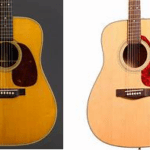A Beginner's Guide to Musical Scales
Music is all around us, from the catchy tunes on the radio to the beautiful melodies played on instruments. But have you ever wondered what creates that structure and organization in music? The secret ingredient is the musical scale.
In this blog, we’ll delve into the fascinating world of musical scales, breaking down the basics for beginners.
What is a Scale?
A musical scale is a set of musical notes arranged in a specific order by pitch. These notes create a unique sound and character that forms the foundation of melodies, harmonies, and chords in music. Scales are like the building blocks that musicians use to construct their musical creations.
Major vs. Minor Scales: Understanding the Mood
There are two main types of scales that you’ll encounter most often: major scales and minor scales. These scales have distinct characteristics that influence the overall mood or feeling of a piece of music.
Major Scales: Major scales produce a bright, happy, and uplifting sound. They are commonly used in popular, classical, and folk music to create a cheerful and optimistic atmosphere.
Minor Scales: Minor scales evoke a sense of sadness, seriousness, or mystery. They are often used in classical and film music to create dramatic or melancholic moods.
Demystifying Scale Notes
Scales are typically comprised of seven notes, each with its own name. These note names come from the first seven letters of the alphabet (A, B, C, D, E, F, G) with sharps (#) and flats (b) to represent variations in pitch.
The distance between these notes is what creates the specific sound of the scale. This distance is measured in intervals, such as whole steps and half steps.
Exploring Different Scales
While major and minor scales are the foundation, there’s a whole world of other scales to explore! Here are a few examples:
Pentatonic Scale: A five-note scale with a simple and exotic sound, commonly found in blues and folk music.
Blues Scale: A six-note scale with a characteristic “blue note” that creates a feeling of bluesy melancholy.
Chromatic Scale: All twelve notes within an octave, used for special effects or to create tension in music.
How to Use Scales in Music
Scales are not just for theory lessons! They are practical tools used by musicians of all levels. Here are a few ways scales can be used:
Playing Melodies: Scales provide the framework for creating melodies and improvising solos.
Building Chords: Chords, the harmonic building blocks of music, are derived from scales.
Ear Training: Practicing scales helps musicians develop their ear for pitch and identify intervals.
Warming Up: Playing scales is a great way for musicians to warm up their fingers and prepare for practice.
Start Your Musical Journey with Scales
Whether you’re a budding musician or a music enthusiast, understanding musical scales opens a door to a deeper appreciation of music. So, grab your instrument (or just hum along!), and start exploring the exciting world of scales!
This blog is just a starting point. As you delve deeper, you’ll discover a vast array of scales used in different musical styles and cultures. There are resources online and music tutors available to guide you on this enriching musical adventure.
Recent Posts
-
 Vande Mataram Piano NotesFebruary 18, 2025/0 Comments
Vande Mataram Piano NotesFebruary 18, 2025/0 Comments -
 Top 10 Acoustic Guitars in 2025February 17, 2025/
Top 10 Acoustic Guitars in 2025February 17, 2025/ -
 Bones Piano NotesJanuary 31, 2025/
Bones Piano NotesJanuary 31, 2025/ -
 Believer Piano notesJanuary 31, 2025/
Believer Piano notesJanuary 31, 2025/ -
 Iktara ChordsDecember 13, 2024/
Iktara ChordsDecember 13, 2024/ -
 Jo Bhi Main ChordsDecember 13, 2024/
Jo Bhi Main ChordsDecember 13, 2024/ -
 Dil Kyun Yeh Mera ChordsDecember 13, 2024/
Dil Kyun Yeh Mera ChordsDecember 13, 2024/ -
 Dil Kya Kare ChordsDecember 13, 2024/
Dil Kya Kare ChordsDecember 13, 2024/ -
 Chadariya Jheeni Re Jheeni ChordsDecember 13, 2024/
Chadariya Jheeni Re Jheeni ChordsDecember 13, 2024/ -
 Jo Tum Mere Ho ChordsDecember 13, 2024/
Jo Tum Mere Ho ChordsDecember 13, 2024/ -
 Jiya Jiya re ChordsDecember 13, 2024/
Jiya Jiya re ChordsDecember 13, 2024/ -
 Husn ChordsDecember 13, 2024/
Husn ChordsDecember 13, 2024/ -
 Janam Janam ChordsDecember 13, 2024/
Janam Janam ChordsDecember 13, 2024/ -
 Chura liya hai ChordsDecember 13, 2024/
Chura liya hai ChordsDecember 13, 2024/ -
 Jhoome Jo Pathaan ChordsDecember 13, 2024/
Jhoome Jo Pathaan ChordsDecember 13, 2024/ -
 Galliyan ChordsDecember 13, 2024/
Galliyan ChordsDecember 13, 2024/ -
 Jiyein Kyun ChordsDecember 13, 2024/
Jiyein Kyun ChordsDecember 13, 2024/ -
 I Love You ChordsDecember 13, 2024/
I Love You ChordsDecember 13, 2024/ -
 Nanga Punga Dost ChordsNovember 26, 2024/
Nanga Punga Dost ChordsNovember 26, 2024/ -
THEREFORE I AM ChordsOctober 25, 2024/
-
Kya Mujhe Pyaar Hai ChordsOctober 25, 2024/
-
YOUR POWER ChordsOctober 25, 2024/
-
NDA ChordsOctober 25, 2024/
-
OVERHEATED ChordsOctober 25, 2024/
-
Do Dil Mil Rahe Hain ChordsOctober 25, 2024/
-
Jo Bhi Main ChordsOctober 25, 2024/
-
Someone You Loved ChordsOctober 25, 2024/
-
MALE FANTASY ChordsOctober 25, 2024/
-
O Come All Ye Faithful ChordsOctober 25, 2024/
-
Kya Hua Tera Vaada ChordsOctober 25, 2024/

